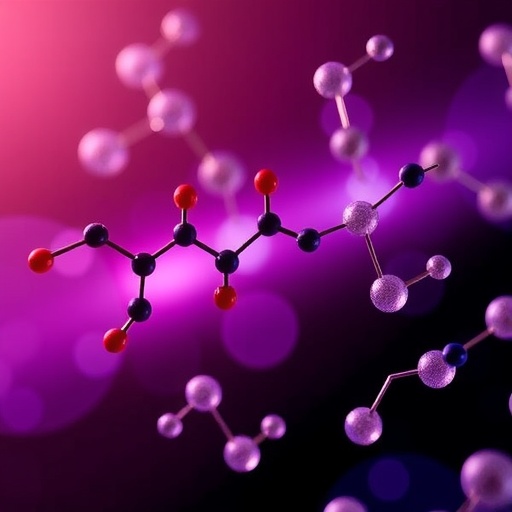
In the relentless quest for new modalities to streamline drug discovery and medicinal chemistry, researchers have long sought innovative methods to directly alter and diversify small molecules. Among the numerous challenges that chemists face, functional group interconversions (FGIs) stand out as pivotal transformations that can rapidly reshape the molecular landscape, enabling both lead optimization and the creation of comprehensive compound libraries. The capacity to perform such conversions efficiently, selectively, and under mild conditions is a game-changer for pharmaceutical innovation. Building on this foundational premise, a novel study has now emerged, presenting an unprecedented method to insert sulfur dioxide (SO₂) into the carbon–nitrogen (C–N) bonds of primary amines, transforming them directly into primary sulfonamides. This groundbreaking approach promises to redefine approaches to sulfonamide synthesis, enhancing both practicality and scope.
Sulfonamides are among the foundational scaffolds in medicinal chemistry, valued for their broad biological activity and versatile physicochemical properties. Traditionally, synthesizing primary sulfonamides necessitates multiple preparative steps involving preactivation, often limiting rapid exploration of chemical space. The direct SO₂ insertion reported here circumvents these constraints by exploiting a unique reagent—a cleverly designed anomeric amide—that effectively flips the reactivity profile of nitrogen atoms. This inversion in nitrogen’s intrinsic characteristics—including acidity and hydrogen bonding capabilities—opens fresh avenues for molecular modification previously deemed challenging or impractical.
The essence of this transformation lies in the dual functionality of the anomeric amide reagent. Functioning not just as a passive coupling partner, the reagent actively orchestrates cleavage of the initial C–N bond while seamlessly integrating a nitrogen atom into the emerging sulfonamide structure. Such an elegant dual role removes the need for traditional prefunctionalization steps, which typically involve cumbersome activating groups and harsh reaction conditions, thereby greatly simplifying synthesis workflows. The net effect is a highly streamlined reaction pathway that is both practical and robust.
.adsslot_VQ43fDYKjX{width:728px !important;height:90px !important;}
@media(max-width:1199px){ .adsslot_VQ43fDYKjX{width:468px !important;height:60px !important;}
}
@media(max-width:767px){ .adsslot_VQ43fDYKjX{width:320px !important;height:50px !important;}
}
ADVERTISEMENT
Importantly, the chemistry underpinning this SO₂ insertion is not just a simple substitution; mechanistic studies reveal a complex yet elegant radical chain pathway dominated by an isodiazene intermediate. This reactive species propagates a radical mechanism that initially cleaves the amine’s C–N bond and forms an intermediate sulfinate species. Following this, the anomeric amide intercepts the sulfinate to forge the sulfonamide’s characteristic S–N bond. This radical chain mechanism enhances the reaction’s efficiency and selectivity, which is crucial when working with sensitive functionalities common in drug-like molecules.
One of the transformative features of this protocol is its remarkable tolerance for diverse functional groups. Whether bearing electron-rich or electron-poor substituents, heterocycles, or delicate protecting groups, the reaction proceeds smoothly without compromising structural integrity. This broad substrate scope significantly expands the potential for late-stage functionalization, a critical paradigm in medicinal chemistry where complex molecules are modified at advanced stages to fine-tune biological properties and pharmacokinetics.
In addition to its synthetic versatility, the SO₂ insertion method is adaptable to automated platforms, marking a significant stride toward high-throughput experimentation (HTE). The ability to run the reaction under automated conditions accelerates the generation of sulfonamide libraries, enabling medicinal chemists to explore vast chemical space in a fraction of the time traditionally required. This feature is timely, given the pharmaceutical industry’s current emphasis on integrating automation and machine learning to improve drug discovery pipelines efficiently.
The implications for medicinal chemistry and drug development are profound. Sulfonamides are key motifs in numerous approved therapeutics, often contributing to crucial target engagements through hydrogen bonding or serving as metabolic blockers. By enabling direct synthesis of primary sulfonamides from readily available amines, this methodology unlocks a reservoir of previously inaccessible compounds. This could catalyze the discovery of novel drug candidates and facilitate the fine-tuning of existing leads, accelerating the trajectory from hit identification to clinical candidate.
To illustrate the practical utility of their chemistry, the authors applied the method across a diverse library of amines, demonstrating high conversion rates and compatibility with complex molecular architectures. The reaction’s amenability to late-stage modification was showcased by transforming active pharmaceutical ingredients (APIs), thus underpinning its potential for lead diversification and analog synthesis. The ability to enact net CO-to-SO₂ isosteric replacement further exemplifies the strategy’s power to effect subtle yet impactful molecular changes that can modulate bioactivity or pharmacokinetic properties.
The mechanistic foundation was rigorously probed through kinetic and spectroscopic investigations, which supported the proposed isodiazene radical chain pathway. This mechanistic clarity is not merely academic; it informs future reaction development and mechanistic tuning, allowing researchers to predict and control reactivity in complex settings. Understanding such radical pathways is particularly important as radical processes often possess distinct selectivities and functional group tolerance compared to classical polar mechanisms.
Beyond the laboratory bench, the integration of this chemistry into automated high-throughput platforms signals its potential for widespread adoption in medicinal chemistry workflows. Large-scale library diversification campaigns become feasible, enabling the parallel generation of sulfonamide analogs that can be rapidly screened for biological activity. Such integration aligns with the current trends toward miniaturization and automation in chemical synthesis, ensuring that this innovative transformation will find resonance well beyond academic curiosity.
In summary, the formal SO₂ insertion into C–N bonds represents a seminal advance in the toolbox available to medicinal chemists. By reimagining traditional approaches to sulfonamide synthesis and applying a strategically designed anomeric amide reagent, the researchers have unlocked a reaction that combines mechanistic elegance with practical utility. This development not only facilitates rapid access to a crucial pharmacophore but also embodies the convergence of synthetic ingenuity and automation that underpins modern drug discovery.
Looking forward, the potential to extend this methodology to other nitrogen-containing substrates and to harness related radical pathways for diverse bond constructions is vast. The platform lays the groundwork for future explorations into selective bond activations, potentially unlocking other “undruggable” chemical transformations that can impact the design of next-generation therapeutics. By bridging mechanistic insight with application-focused innovation, this work exemplifies how contemporary synthetic chemistry continues to drive progress in medicinal sciences.
This breakthrough is certain to inspire renewed interest in direct functionalization strategies and will likely spark a wave of research focusing on the design of multifunctional reagents capable of manipulating complex molecules with unprecedented precision. As the pharmaceutical landscape becomes increasingly intricate, such tools become invaluable for navigating the complexities of molecular optimization and therapeutic innovation.
The study reflects a broader scientific ethos: that modern challenges in chemistry often require a harmonious blend of thoughtful reagent design, deep mechanistic understanding, and an eye toward practical applicability. The researchers’ success in leveraging an anomeric amide as both a bond cleaving and bond forming agent is a testament to this integrated approach. It encapsulates the continual evolution of synthetic methodology toward more concise, efficient, and versatile chemical transformations.
In conclusion, the ability to access sulfonamides directly via formal SO₂ insertion into C–N bonds redefines how chemists can manipulate nitrogen-containing compounds. The method’s operational simplicity, broad tolerance, and mechanistic sophistication together set a new standard for functional group interconversions in medicinal chemistry. As such, it promises to become a linchpin technology, accelerating discovery and broadening horizons for drug development across academic and industrial spheres alike.
Subject of Research: Functional group interconversion via formal SO₂ insertion into C–N bonds for the synthesis of primary sulfonamides.
Article Title: Accessing sulfonamides via formal SO₂ insertion into C–N bonds.
Article References:
Kim, M., Obertone, C.E., Kelly, C.B. et al. Accessing sulfonamides via formal SO₂ insertion into C–N bonds. Nat. Chem. (2025). https://doi.org/10.1038/s41557-025-01848-2
Image Credits: AI Generated
Tags: compound library developmentdirect SO2 insertion chemistryefficient drug discovery techniquesfunctional group interconversions in drug discoverylead optimization strategiesmedicinal chemistry innovationsnitrogen reactivity and modificationsnovel reagents in chemical synthesispharmaceutical chemistry advancementsprimary amines to sulfonamides transformationsulfonamide scaffolds in pharmaceuticalssulfonamide synthesis methods


